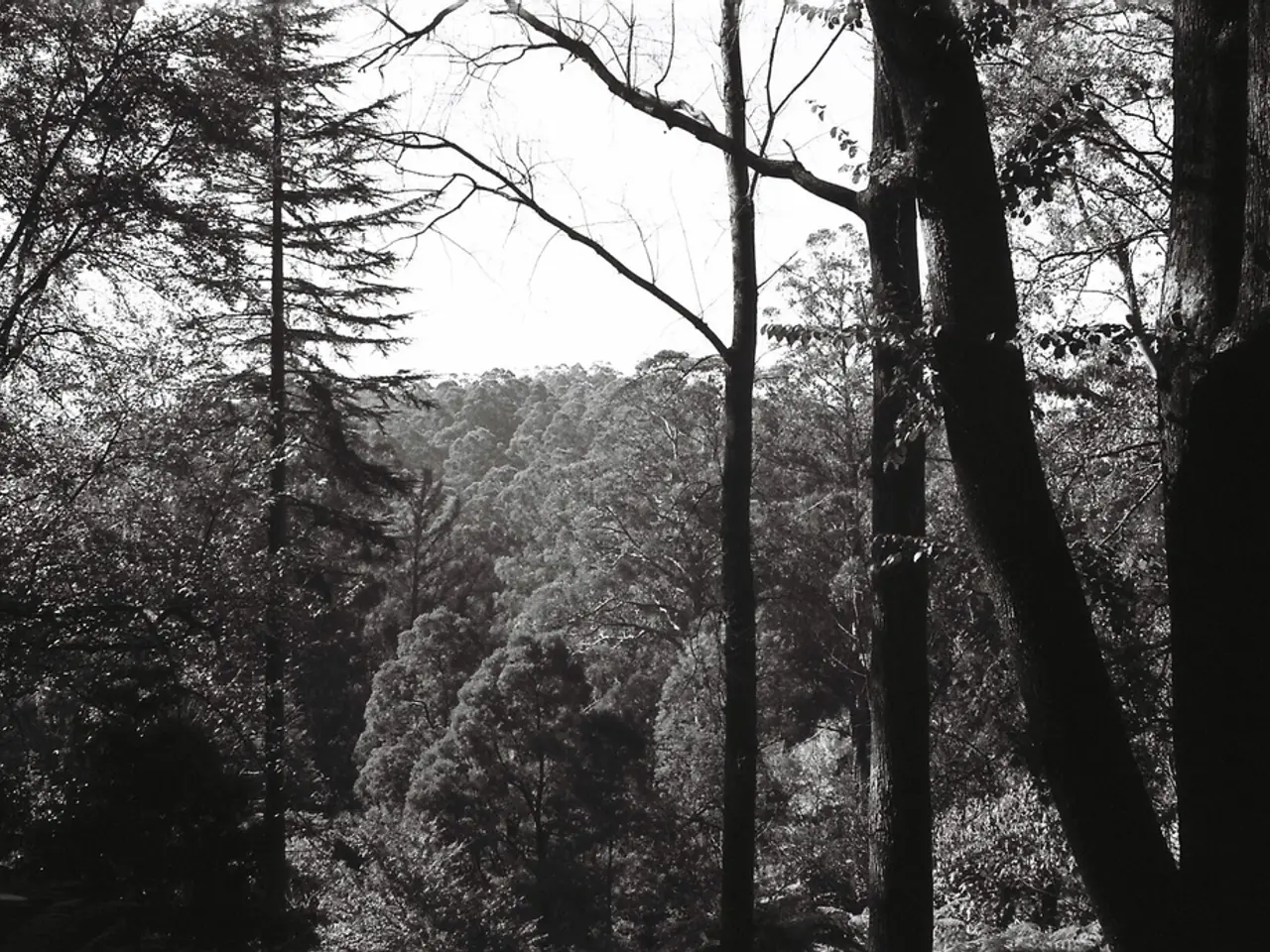Seven Shade Trees Efficiently Lower Your Home's Temperature Naturally and Present No Harm When Planted Near the Residence
In an older home built before the widespread use of central air conditioning, a homeowner found themselves battling the summer heat. With a southern-facing orientation and initially shaded by three gigantic maple trees, the house became unbearably hot during the warmer months. After the maple trees were removed due to safety concerns, central air conditioning was eventually installed. However, the homeowner soon discovered a more eco-friendly and cost-effective solution: planting the right type of trees in the right location.
Planting deciduous trees can significantly reduce the amount of heat absorbed by a house and, in turn, reduce cooling costs. These trees, through a process called evapotranspiration, can reduce the surrounding air temperature by up to 6°F or 3.3°C. When selecting trees for shade and energy savings close to a house, it's important to choose trees with non-invasive roots and a manageable size to avoid damaging foundations or interfering with power lines.
Here are some of the best deciduous trees for this purpose:
1. **American Hornbeam (Carpinus caroliniana)** Known for its compact size, non-invasive roots, and dense canopy, the American Hornbeam is ideal for planting near a house. It typically grows to 20 to 30 feet and is adaptable to most soil types in USDA zones 4 to 8.
2. **Eastern Redbud (Cercis canadensis)** This tree provides gentle, dappled shade with heart-shaped leaves and blooms beautifully in the spring with pink flowers. It is adaptable to various soil types in USDA zones 4 to 9.
3. **Crape Myrtle (Lagerstroemia)** Offering vibrant summer blooms, Crape Myrtle can thrive in a variety of conditions. It can range from small shrubs to tall trees, typically under 25 feet for smaller varieties, and is suitable for USDA zones 7 to 10.
4. **Serviceberry (Amelanchier canadensis)** Known for its beautiful flowers and edible berries, Serviceberry is relatively small and adaptable. It typically grows to about 15 to 25 feet and does well in USDA zones 4 to 8.
5. **Japanese Maple (Acer palmatum)** While often used for ornamental purposes, Japanese maples can also provide shade, especially in smaller spaces. They typically range from 10 to 25 feet and prefer well-drained soil and partial shade, suitable for USDA zones 5 to 8.
For those looking for a more unique addition to their garden, the Coral Bark Japanese maple tree is one of the most stunning varieties. It features neon green leaves that turn fiery autumnal shades before falling to reveal bold red bark in winter.
In addition to keeping a house cooler, these trees can improve air quality, add curb appeal, and raise property value. For instance, the author saved on energy costs by planting a fast-growing dawn redwood in the front yard, a safe distance from the home.
Other popular choices for shade trees include the American Sycamore, which provides massive, cooling shade, growing up to 70 feet tall with a canopy width of 50 feet, and the Hackberry, a tough, drought-tolerant native shade tree, growing to be 50 to 75 feet tall with a spread of 25 to 40 feet.
When planting trees, it's essential to consider their mature size, root system, and suitability for your specific climate and soil type. Buy hackberry trees from Nature Hills, Eastern redbud trees from FastGrowingTrees.com, and sycamore trees from the same website.
From firsthand experience, the right shade trees can make a significant difference in keeping a home cool and comfortable, all while contributing to a greener and more sustainable living space.
Planting the American Hornbeam (Carpinus caroliniana) near a house can help significantly reduce cooling costs due to its compact size, non-invasive roots, and dense canopy. The Eastern Redbud (Cercis canadensis), with its heart-shaped leaves and spring blooms, can provide gentle, dappled shade and is adaptable to various soil types.
The Japanese Maple (Acer palmatum), while often used for ornamental purposes, can also provide shade and improve air quality in smaller spaces. With neon green leaves that turn fiery autumnal shades before falling and bold red bark in winter, the Coral Bark Japanese maple is a unique addition to any home-and-garden lifestyle.




